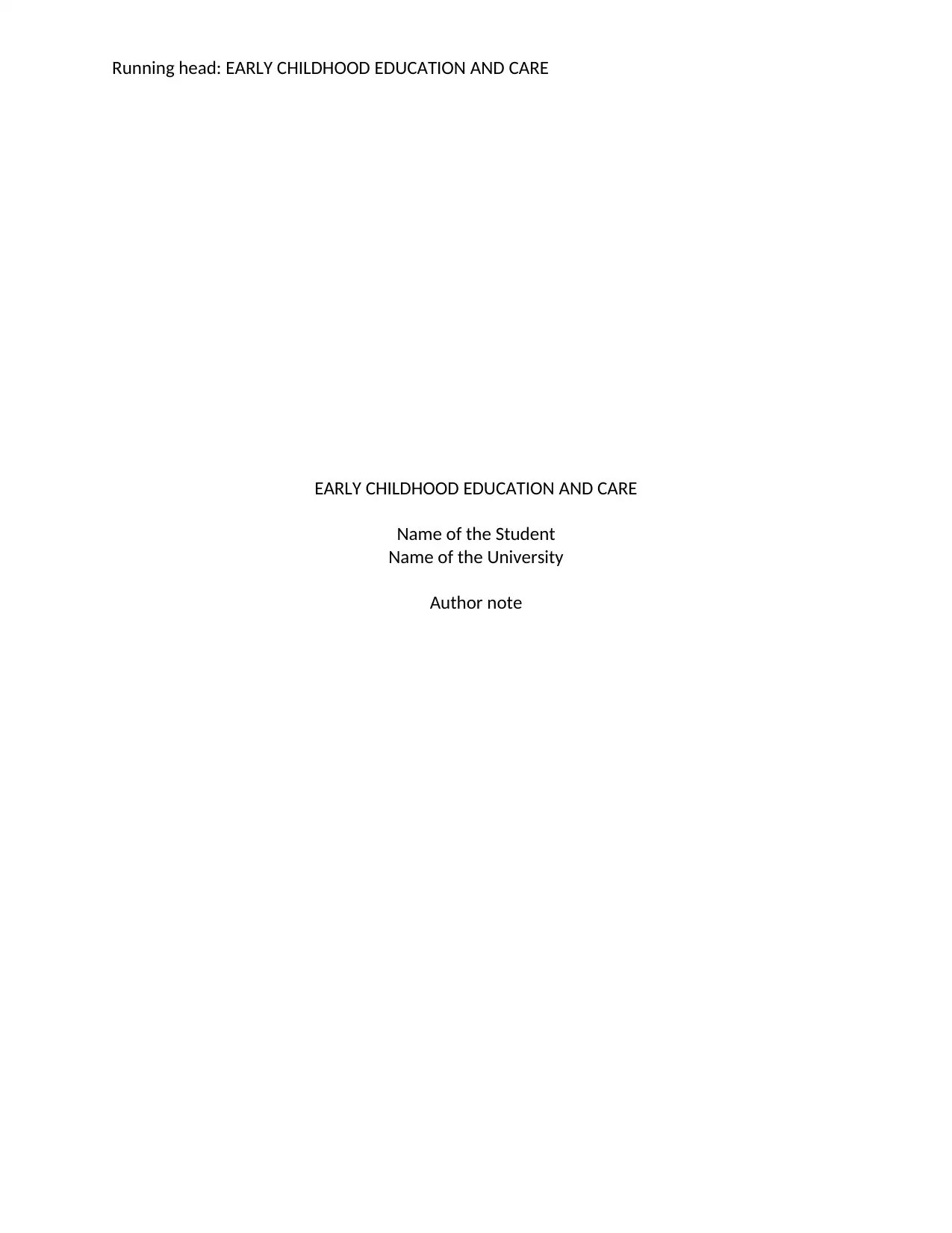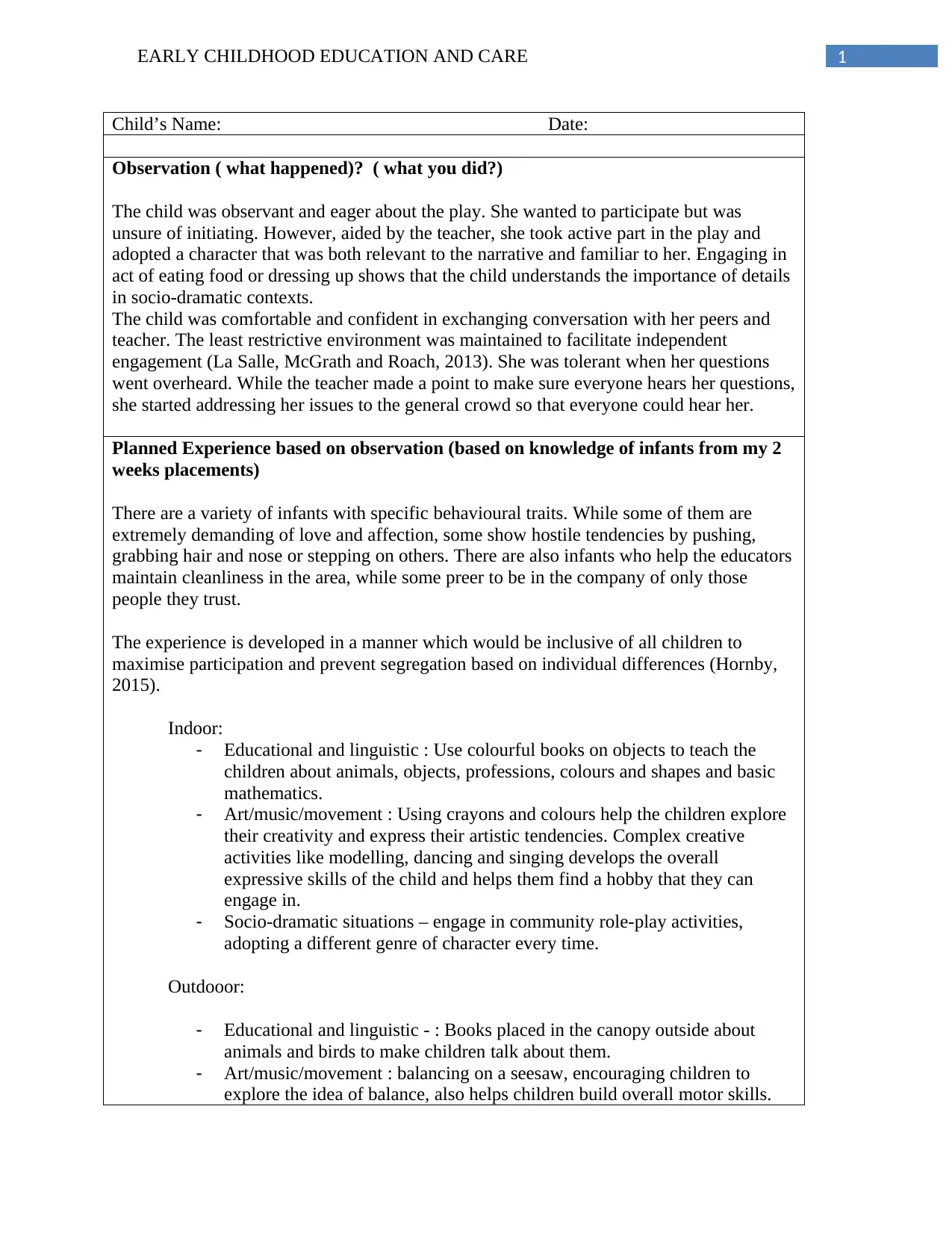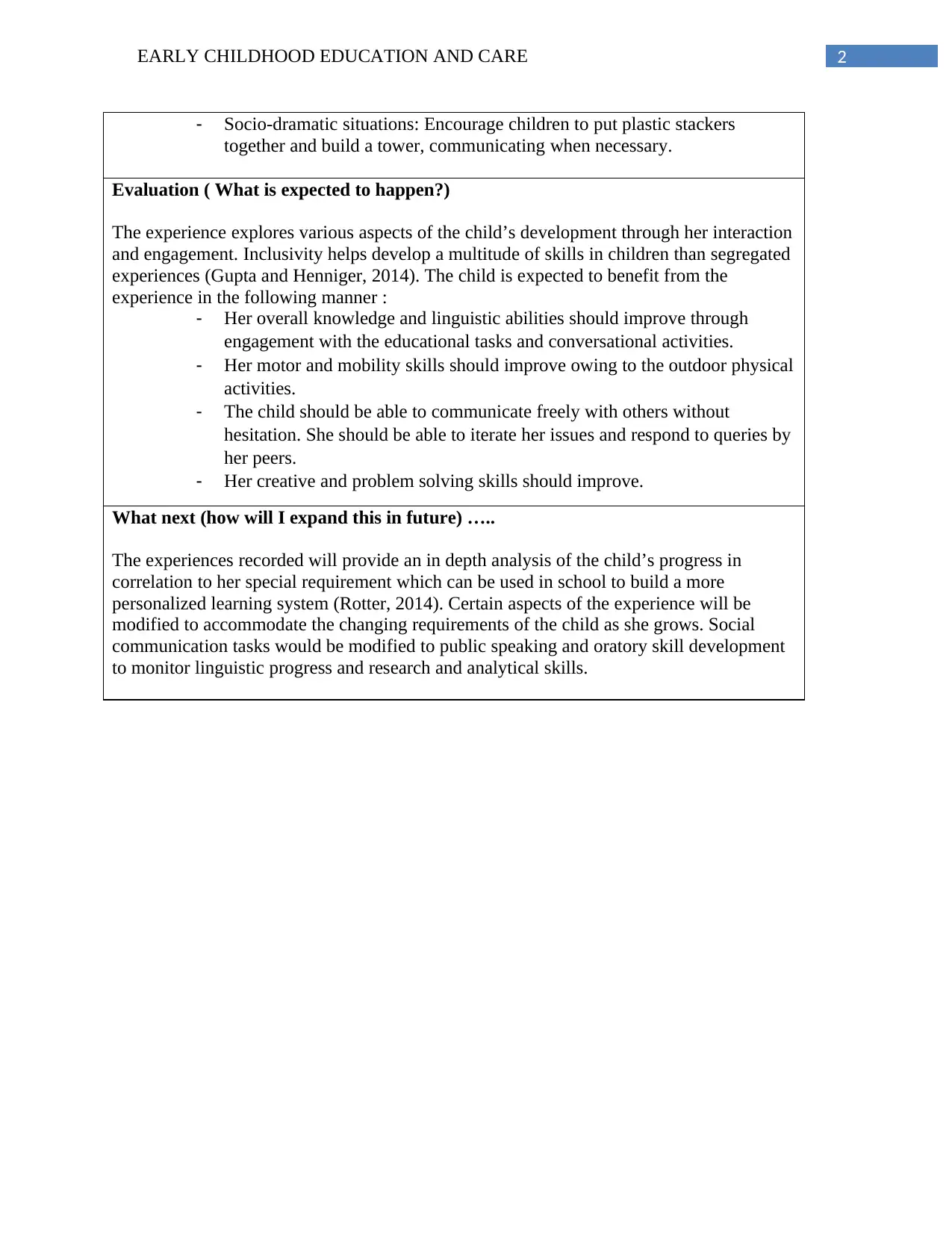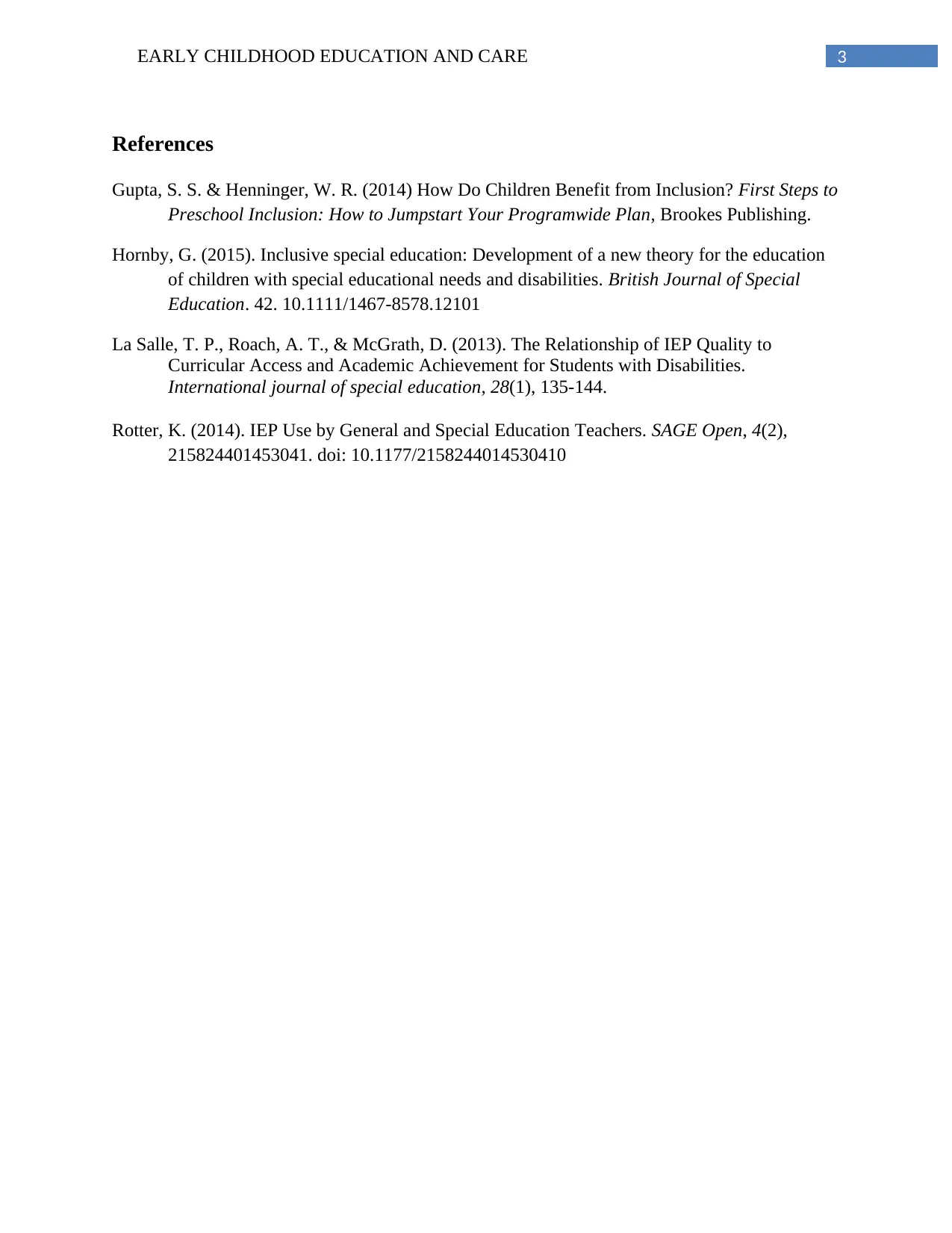Early Childhood Education: Zifa's Learning Experience and Evaluation
VerifiedAdded on 2022/12/28
|4
|846
|67
Practical Assignment
AI Summary
This assignment centers on creating and evaluating a learning experience for a child named Zifa within an early childhood education setting. The task involves analyzing provided observations of Zifa's behavior and interactions, particularly focusing on her concentration, turn-taking skills, respect for others, interest in letters and numbers, and auditory processing. Based on these observations, the student is required to design a learning experience that promotes inclusion and addresses one of Zifa's specific goals. The assignment requires detailed planning, including the rationale behind the chosen activities, considerations for inclusivity, and an evaluation of the expected outcomes, along with potential extensions for future learning. The student is also expected to reflect on how the experience aligns with the Victorian Early Years Learning and Development Framework and other relevant educational approaches like Reggio Emilia and Gardner's Multiple Intelligences, while also linking to the EYLF outcomes. This assignment highlights the practical application of early childhood education principles and the importance of individualized learning plans.
1 out of 4











![[object Object]](/_next/static/media/star-bottom.7253800d.svg)